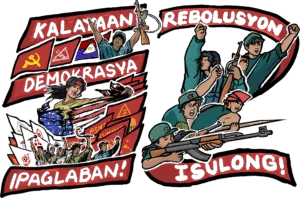II. What has Reform meant for workers and other urban dwellers?
After the Reformers broke up the communes, they started to fundamentally change the relations of production in the industrial sector. Labor reform was a necessary component of that change. The goal was to dissolve the permanent employment system and turn workers in State enterprises into wage laborers and their labor power into a commodity.
The Reform first attempted to change the basic eight-grade wage system by adding bonuses to entice workers to compete. Workers resisted this change by sharing the bonuses equally to compensate for rises in the costs of living. They also resisted the Reformers’ attempts to replace monthly wages with piece-work wages, because they recognized it as a tactic to divide them; workers learned a great deal during the Cultural Revolution about how material incentives could be used against them.
During the 1980s the Reformers were able to gradually change workers’ permanent employment status by assigning temporary contract status to newly hired workers. The big push came in the early 1990s when large-scale privatization and restructuring of the former State enterprises began, and by 1999 the percentage of workers in former State enterprises (including a small number of urban collectives) decreased to 47.5%. This great wave of lay-offs and/or forced retirements from factory closings and restructuring threw tens of millions of workers out on the street. The majority of these workers were paid only a small severance pay. Many of them lost their pensions or only receive a meager amount to barely keep them afloat. These pensions – 500 RMB to 600 RMB a month often have to be stretched to support the workers themselves and their unemployed sons and/or daughters.
Most of the laid-off workers also lost their benefits, and with the cost of medical care skyrocketing, most can no longer afford any medical care. Hospitals, which have been changed into profit making institutions, charge a great deal of money to run mostly unnecessary tests before dispensing expensive imported medicine, so that doctors can receive bonuses. Without health insurance or any preventive health care, people often delay seeking treatment until their minor medical problems progress into major emergency cases. When they are finally rushed to the hospital, they are refused admission unless they pay a large sum of money up front.
The housing reform began before the big wave of laid-off and sold each housing unit, which workers and families lived for decades, to the workers. But once housing was privatized, factories no longer provided housing for its workers as they had done during the socialist era. Since the end of the 1990s, only a little more than half of the workforce was still employed in the formal sector. Today workers are lucky if they still hold regular jobs, and their wages are often too low to afford rent. The cost of housing has increased by between fifty and a hundred times, and rent has closely followed. Younger workers either continue to live with their parents or have to double up in very crowded quarters.
Those who work outside the formal sector find whatever odd jobs they can to support themselves and many of them live on or below subsistence levels of income. A lot of them work as small vendors selling food or other low cost items on the street4. Many others are also hired for a few hours or a few days at a time.
These temporary and casual jobs pay below subsistence level wages – usually about half of the minimum wage of regular workers in the formal sector. Successful food peddlers may earn a higher income, but to begin with they need capital and may have to pay high rent for a small space to do business. They also have to endure the harassment from the police. In order to avoid arrest, they have to use a substantial portion of their income to bribe corrupt police. People no longer see the police as their protectors but rather as abusers, who do not hesitate to use brutal force to evict people and charge people large fines and pocket the money.
In addition to workers who lived and worked in China’s urban areas, more than 200 million migrant workers from the countryside have flooded into the cities looking for work. The majority of female migrant workers have been hired by export industries located in coastal areas or work in the service sector including domestic work for rich families. Most of the male migrants work for the construction firms. These workers are forced to leave home, because (as described below), they can no longer subsist on what they earn from growing crops. Migrants come to the cities and take the hardest, dirtiest, and most dangerous jobs to send money home in order to support their families. Since they do not have legal urban resident status, they are often mistreated or abused by their employers and owed back wages. If a family migrates together, their children cannot attend city schools for lack of legal status. Factories in the export industry provide often dangerously over-crowded dormitories, and those who work in construction often are forced to sleep in tents near the construction site. The treatment they receive in their own country is not too different from the treatments that undocumented foreign migrants receive around the world.
Even more critical, workers in China have lost the dignity and respect they once had. In the socialist era they were referred to as the “masters” of the country and had a lot of power to make decisions and control their workplace. During the Cultural Revolution, most factories went through struggles to eliminate unreasonable rules and regulations. Workers were empowered to speak out against management and did not fear dismissal or punishment. Workers had a high level of political consciousness and debated important issues amongst themselves.
The status of workers in society and in the workplace has sunk to a pre-Liberation level. Workers are constantly afraid of losing their jobs. Older unemployed workers are outraged when the former State enterprises that they built with many decades of hard work are squandered away by the privileged few, who have connections with the politically powerful. They feel a very strong sense of injustice. A former model worker now in his seventies told me how they used to volunteer for overtime work on Sundays without any overtime pay or bonuses. He also said that older workers in his factory routinely went to the factory on Sundays and holidays just to make sure everything was all right. They put forth best efforts and treated the factory as their own. When the Reformers claim that State enterprises were inefficient due to lax and lazy workers as an excuse to institute the Labor Reform, these workers are infuriated.
At the same time that workers lost their health insurance, they have been increasingly subjected to hazardous and toxic working conditions. Many high-tech firms, which relocated to China to take advantage of the low wages, also went to escape environmental regulations in their home countries. The loss of lives and injuries caused by working in unsafe and contaminated environment are staggering. People of different ages work without any protection to extract toxic metals from hazardous electronic waste exported by the United States, while miners work in dangerous coal mines suffering high fatality rates. According to the official record in 2003, four miners died for every million tons of coal mined, ten times the death rates of all Western countries as well as Russia. (China.org.cn)
In addition to a small minority of extremely rich people – corrupt bureaucrats and the new capitalists – who live extremely luxurious lives, there is also a segment of the urban population, around 20% to 30% who have also lived well in the past 30 years. Some are professionals who work for large domestic and foreign businesses. They receive high salaries and are able to afford a high standard of living comparable to the so-called middle class in Western countries. Not only are their salaries high, they also have large expense accounts, which they use to enjoy expensive meals in upscale restaurants. Most of these people own lavishly furnished apartments and many also own a car. Others in this class of the urban population are current or retired middle level government bureaucrats, including university professors. The government deliberately favored these intellectuals in order to buy their support. They also enjoy high salaries and (unless retired) sizable expense accounts. Majority of these “middle class” individuals are very satisfied with their lives and support Reform policies. However, they are not a homogeneous group; despite their rather comfortable living, a small but growing number are increasingly critical of the Reform and have recently become very vocal, voicing sharp attacks.
The opinions of the well-to-do urban population are bound to change when they experience the increasingly worsening economic crisis. Some of them have already started to complain about the government’s lack of action when they lost their savings in the stock market, which fell about 60% in the past year. The impending bursting of the housing market bubble, the increasingly depressed economy and the ongoing higher cost of living is going to further hurt the interests of this group.

